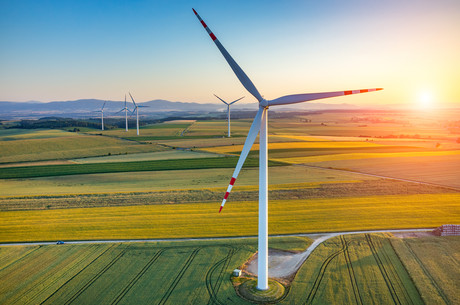World's largest Li-ion battery a win for Hornsdale Wind Farm

South Australia will soon become home to the world’s largest lithium-ion battery, following a historic agreement between French renewable energy company Neoen, US sustainable energy company Tesla and the South Australian Government. The battery will be hosted at Neoen’s Hornsdale Wind Farm near Jamestown, where it will provide stability services for renewable energy and emergency back-up power if a shortfall in energy is predicted.
In a blog post, Tesla explained that the SA government began seeking energy security solutions in the aftermath of the state-wide blackout last September. Specifically, the government was calling for expressions of interest to deploy grid-scale energy storage options with at least 100 MW of capacity.
Tesla was selected to provide its 100 MW/129 MWh Powerpack system as part of a competitive bidding process in which the company was awarded the entire energy storage system component of the project. Tesla CEO Elon Musk has agreed to deliver the battery within 100 days or at no charge, starting once the grid interconnection agreement has been signed.
Powerpack will charge using renewable energy from the Hornsdale Wind Farm and then deliver electricity during peak hours to help maintain the reliable operation of South Australia’s electrical infrastructure. The system is expected to be the largest lithium-ion battery storage project in the world, providing enough power for more than 30,000 homes — approximately equal to the number of homes that lost power during the blackout period.
Australian scientists have been quick to comment on the news, with Dr Geoff James from the University of Technology Sydney (UTS) saying the Tesla battery is “an important part of the solution” to South Australia’s recent stability problems.
“Co-locating the battery with a wind farm highlights another key characteristic of battery energy storage: its value is being able to do multiple things at once, and to do them quickly,” said Dr James, a research principal in UTS’s Institute for Sustainable Futures. “The Tesla battery farm, like a modern Stonehenge aligned with the surrounding turbines, will shift wind energy production to make it more dispatchable and therefore more profitable.
“At the same time, its high power capacity will be available in quick bursts to keep frequency in the right range. In just the same way, batteries at residential and commercial premises can support both the owner and the grid, and it won’t be very long before South Australia can aggregate another 100 MW of battery capacity in this way.”
Dr Christopher Jones, national secretary for the Australian Electric Vehicle Association (AEVA), added that the battery will “be able to instantly provide power to the grid when needed, as well as taking out any fluctuations in generating capacity from surrounding wind farms and PV installations”.
“The battery will supply close to 10% of the state’s energy needs for almost an hour,” Dr Jones said. “It might seem like a drop in the energy demand ocean, but it’s the first of many drops. Storage has long been the missing link for renewable energy and, coupled with developments such as pumped hydro in the Snowy Mountains scheme, will make a significant contribution to Australia’s greenhouse gas reduction commitments.”
The system will be completed in December 2017.
Tragic incident at wind farm under investigation
WorkSafe Victoria is investigating the death of a worker who was crushed by a wind turbine blade...
CSIRO's new facility for printed flexible solar techology
CSIRO has opened its $6.8m PV facility in Victoria, which is taking printed flexible solar...
Trinasolar launches agrivoltaics project in NZ
A collaboration with Kiwi Solar and Trilect, the project marks Trinasolar's third foray into...









